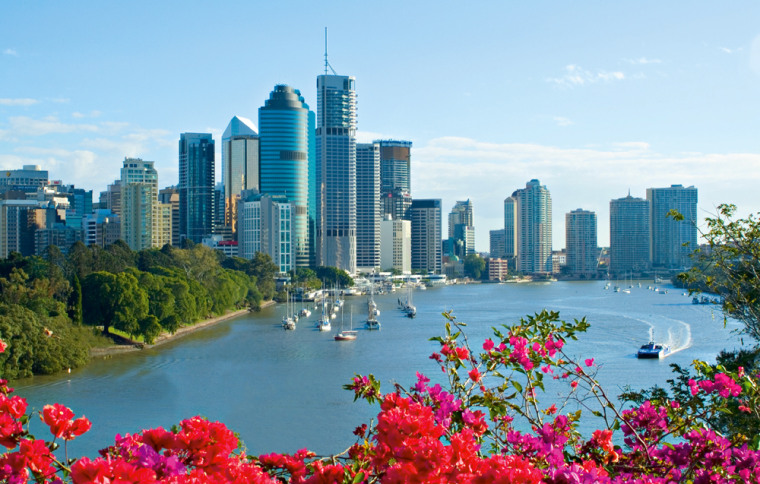Last April, I had an opportunity to visit Australia for about two weeks. I dreaded the long flight — starting in Boston, landing in Los Angles and finally stretching clear across the Pacific to Brisbane. My fears were overwrought. I flew trans-Pacific with Qantas in business class to Australia and returned in coach. Business class was far more comfortable, of course, but neither flight was particularly torturous. The destination was worth the journey.
Blog: Observations while winging across the Pacific
When considering a trip to Australia, remember that this is a big country. I'm not sure of the exact size, and square miles don't really register with me, but think of a landmass about the size of the continental United States.
Don't plan on skipping around the country as though you were planning a trip to New England, France or the United Kingdom. Choose a limited region, instead, bearing in mind that a trip from Brisbane to Sydney, two cities on the east coast, is around a 12-hour drive (or a 1.5 hour flight). Continue on to Adelaide, on the south coast, and it will take you another 18 hours in the car (1.5 hours in the air). Flying cross-country from Sydney to Darwin, on the north coast, will take you more than six hours.
Here are two suggested cities that can serve as wonderful bases for an Australian vacation. I like them because they present two different sides of the country. Brisbane, the epitome of modern Australia, has flashy office towers and high-tech energy; its climate is tropical. Adelaide, the first planned city in Australia, is grounded in agriculture and Old World elegance; it has a temperate climate. Together with Sydney, the finance and tourism capital, they make a nice first-timer's itinerary. Links to my blog entries from April 2007 are noted below; these describe both cities in detail.
Brisbane
Brisbane is a good place to start any visit to Australia. Qantas now offers daily nonstop flights from Los Angeles to Brisbane from the United States. Brisbane is one of the gateways to the Great Barrier Reef, to the north, and to the surfing and beach towns of the Gold Coast, to the south. Outside the city and the coastal resort towns, the wide-open Australian countryside and ocean shoreline provide a dramatic backdrop to any tour.
When you think Brisbane, think Miami in terms of temperature, humidity and long sandy beaches, then add a broad river flowing through the city and into Moreton Bay. The city is young and hip and is the fastest-growing city in Australia. Glass skyscrapers soar above a clutch of turn-of-the-20th-century stone buildings in the city center, while the downtown district has broad bustling pedestrian zones packed with theaters, shops, cafes and restaurants.
City planners have taken pains to create an environment where the residents can easily enjoy the riverside and the parks. Ferries ply the river, with stops all along its urban course, weaving together the business district, residential neighborhoods, the university, gardens, parks, museums, concert venues and theaters.
The Brisbane blogs: Day One and Day Two
Adelaide
About a three-hour flight to the southwest, the city of Adelaide serves as the hub of Australia's fertile agricultural center. Nearby Barossa Valley is the cradle of Australia's wine industry and has always been the breadbasket of the continent. To the west, off the coast, is Kangaroo Island, a windswept nature preserve where kangaroos, sea lions, penguins and platypuses play.
Blog: From Brisbane to Adelaide to Barossa
Blog: From Barossa into Adelaide City Center
This city was the first Australian city founded by law-abiding immigrants rather than convicts. Lots in the new town were sold, in much the same way that lots were sold in Florida land developments. Colonel William Light, the chief colonial surveyor, laid the town out in a grid with a swath of parkland surrounding the town. This clear green zone, the width of a musket-ball flight, was used for defensive purposes, in place of a wall.
The clear zone is now an expansive parkland for the city folk. Virtually every form of sport (rugby, soccer, running, rowing, archery, cricket — you name it) has a field or facility somewhere in these green areas. The parks are also home to a zoo that could double as a botanic garden and is the perfect place for a picnic.
The government buildings are gracious and monumental, presenting Corinthian colonnades and massive stone fronts to the street. The old library interior looks like a grand room at Hogwarts, and the museums provide an exceptional view into the development of the south coast. The South Australia Museum has one of the nation's largest displays of Aborigine culture.
As agriculture boomed in the surrounding farmland, the city grew and Italian immigrants moved into the region. Soon Adelaide became the commercial center for fruit and wine cultivation. The pulsing commercial heart of Adelaide is its Central Market, which is filled with stalls and vendors hawking everything from tropical flowers and fruits to exotic fish to local beef.
Brisbane and Adelaide give only a taste of Australia. Either city is a wonderful base from which to explore the country's coasts, reefs, farmlands, vineyards and the Outback. Spring is in the air — why not pay a visit?
If you are interested in joining the fastest growing travel message board on the internet, register at our Tripso Forums.
